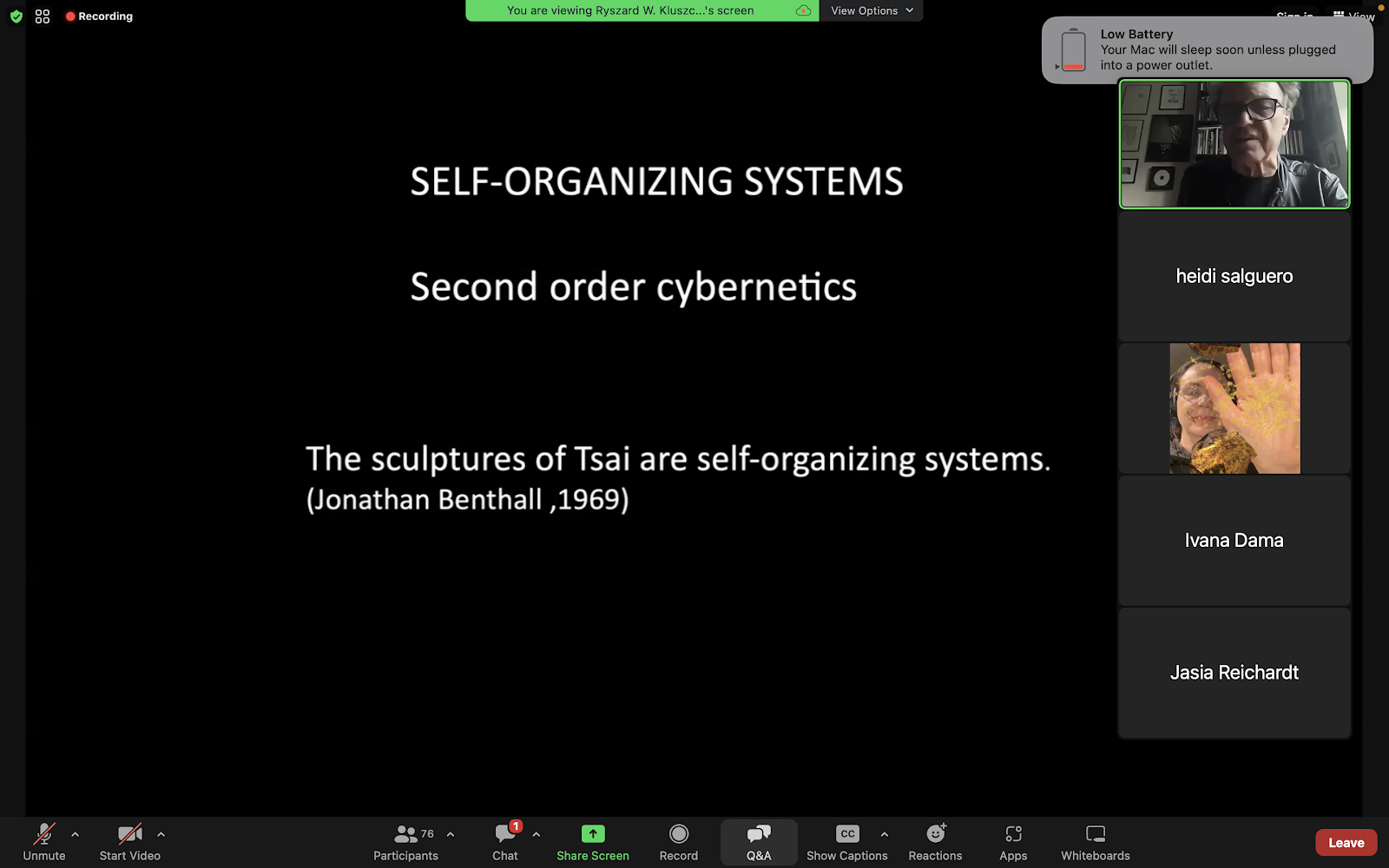Event 1: COLOR LIGHT MOTION: Featuring Ryszard Kluszczyński
The event was led by Ryszard Kluszyński with Victoria Vesna and guests such as London Tsai and Steve Dixon. The main topic was Cybernetics and its connection with Wen-Ying Tsai’s work, which is “the science of communications and automatic control systems in both machines and living things.” (Merriam-Webster). The viewership of Tsai's work is that “The sculptures of Tsai are self-organizing systems.” (Kluszyński and Vesna).
All in all, the integration of tech and art on Tsai’s work was truly a transformative experience that I wouldn’t have had contact with if it weren’t for the event itself. I enjoyed it thoroughly and look forward to see more on what else the class may align with works that leave me impacted the way Tsai’s work did.
Works Cited:
Benthall, Jonathan. “The Cybernetic Sculpture of Tsai Wen-Ying.” Studio International: Visual Arts, Design
and Architecture,https://www.studiointernational.com/the-cybernetic-sculpture-of-tsai-wen-ying. Accessed 28 Apr. 2024.
Contributors. “Wen-Ying Tsai - Wikipedia.” Wikipedia, the Free Encyclopedia, Wikimedia Foundation, Inc., 12 Feb. 2013, https://en.wikipedia.org/wiki/Wen-Ying_Tsai.
Kluszyński, Ryszard, and Victoria Vesna. COLOR LIGHT MOTION: Featuring Ryszard Kluszczyński. Zoom, 2024.
Stachowiak, Martyna. “Retrofuturism: A Tomorrow That Never Was.” Displate Magazine, 2 June 2021, displate.com/retrofuturism-tomorrow-that-never-was/#:~:text=The%201960s’%20veneration
%20of%20the,during%20the%20Second%20Industrial%20Revolution.
Tsai, London. “London Tsai : Kinetic.” London Tsai, https://www.londontsai.com/kinetic/view/712368/1/7694368. Accessed 28 Apr. 2024.







Comments
Post a Comment